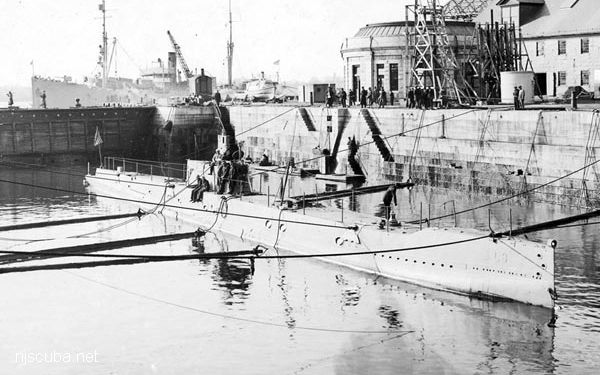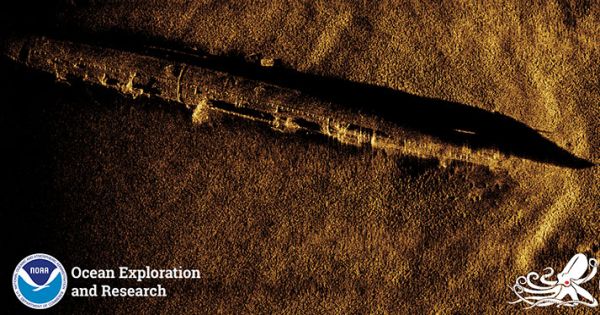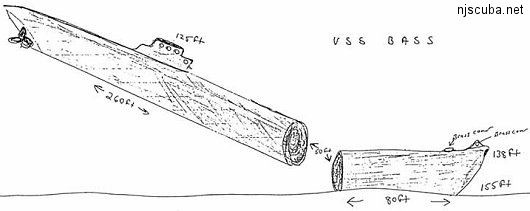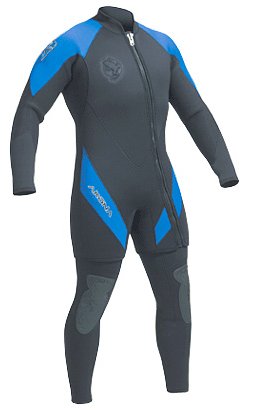USS L-8 SS-48

- Type:
- shipwreck, submarine, U.S. Navy
- Built:
- 1917, Portsmouth Naval Shipyard, Portsmouth, NH USA
- Specs:
- ( 167 x 15 ft ) no crew
- Sunk:
- Wednesday May 26, 1926
deliberate - torpedo test - Depth:
- 110 ft
L-8 was ultimately destroyed as a target during testing for magnetic influence exploders for torpedoes, off Rhode Island on 26 May 1926. This was the only test with live torpedoes of magnetic exploders conducted by the Navy in the 19 years before the World War II period.
The L-8 is intact and semi-upright, although badly "decomposed", off Newport, Rhode Island.

The L-8 appears to be resting on her port side in about 110 feet of water in an east/west orientation. Sections of the outer hull are missing, the pressure hull has been breached, and there is some damage to the stern – all likely exacerbated by attempts to salvage the vessel's propellers in the late 1980s.
(Submarine No. 48: displacement 456 (surfaced), 524 (submerged); length 165'; beam 14'9"; draft 13'3"(mean); speed 14 knots (surfaced), 10.5 knots (submerged); complement 28; armament 1 3-inch, 4 18-inch torpedo tubes; class L-5)
L-8 (Submarine No. 48) was laid down on 24 February 1915 at Portsmouth, N.H., by the Portsmouth Navy Yard; launched on 23 April 1917; sponsored by Miss Nancy Gill, daughter of Lt. Charles C. Gill, U.S. Navy, and granddaughter of Rear Adm. William L. Howard, U.S. Navy; and commissioned on 30 August 1917, Lt. James Parker, Jr., in command.
Following training operations along the east coast, L-8 prepared for European service. Departing Charleston, S.C., on 20 October 1917, the submarine steamed for the Azores to join Submarine Division 6. She arrived Bermuda on 13 November, two days after the end of the Great War, and received orders to return to the U.S.
After exercises and visits to Caribbean and Central American ports, L-8 arrived at San Pedro, Calif., on 13 February 1919 to join the submarine flotilla on the west coast. Remaining there from 1919 to 1922, during which time she was redesignated from Submarine No. 48 to SS-48 on 17 July 1920, she participated in the development of new torpedoes and detection equipment.
Following a period of commission in ordinary [a decommissioned status] early in 1922, L-8 departed San Pedro on 25 July 1922 for the Atlantic, arriving at Hampton Roads, Va., on 28 September. The submarine decommissioned there on 15 November 1922 and was sold on 21 December 1925 and scrapped.
from Navy historical records



Questions or Inquiries?
Just want to say Hello? Sign the .